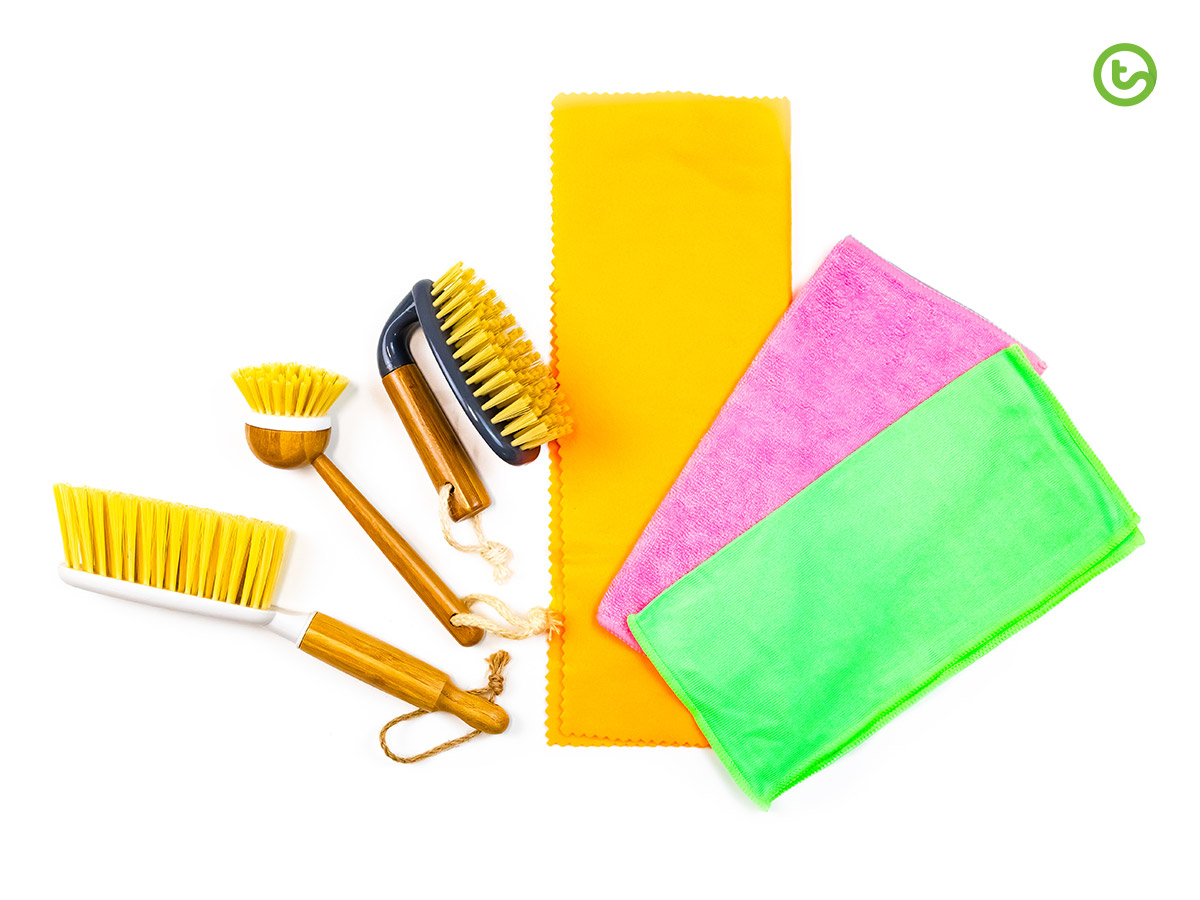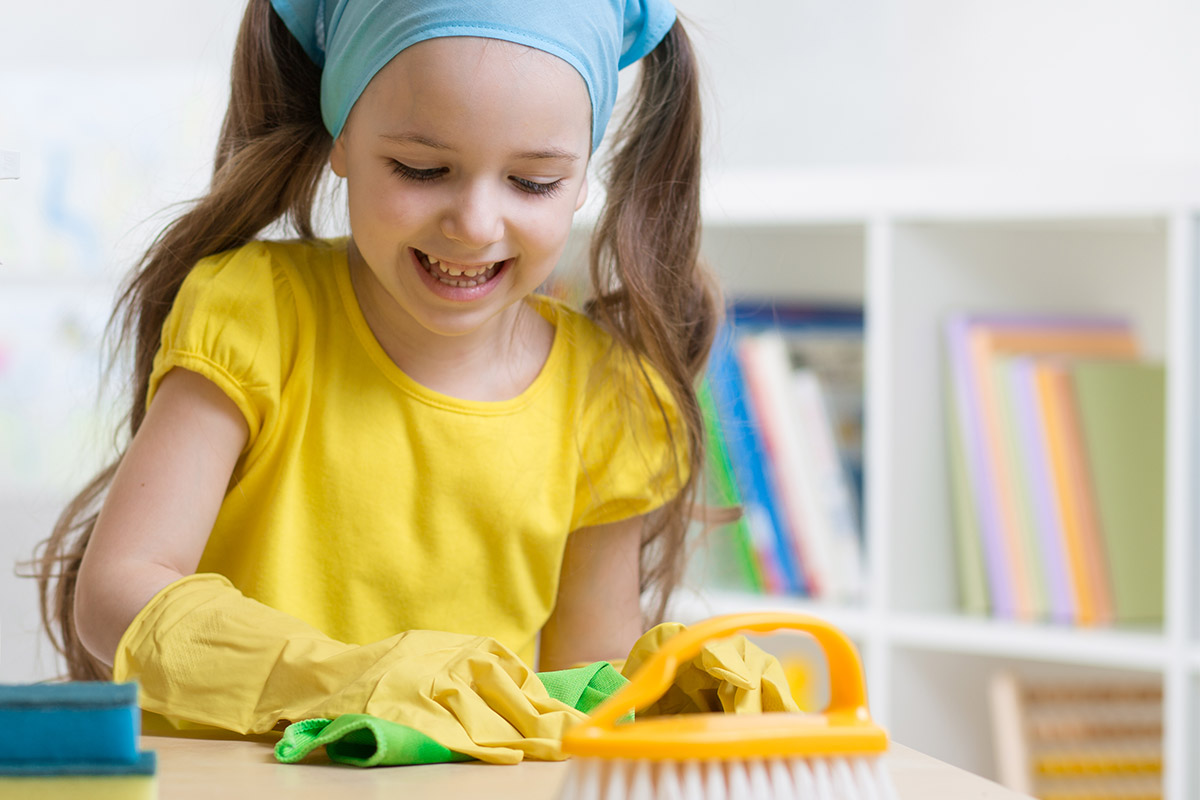Sliding on in to the break, teachers everywhere are dutifully cleaning their classrooms from top to bottom. We’ve popped together some of the best tips and recipes to clean your classroom in an environmentally responsible way.
When I first began teaching, it was common practice for teachers to use the final Friday of the school year cleaning their classrooms with their students. Kids would be allocated jobs and could be seen outside on the grass (wearing hats and sunscreen of course), scrubbing desks and tidy trays with all their might, preparing them for their new owners. They actually seemed to relish it. Cool splashes of soapy water were a welcome reprieve from the thick December humidity we know and love in Queensland.
But, as the years went on, allergy awareness increased and schools became concerned with children’s potential exposure to chemicals in commercial cleaning products. It became the teacher and aide’s sole responsibility to clean their class set of desks, chairs, walls, windows and whiteboards. Yay.
By embracing sustainable classroom practices we promote a green future for our students and create products which are safe for us all.
Basic Kit for Green-Cleaning Your Classroom
![]()
With just a few staple groceries you’ll be able to assemble your basic kit for environmentally aware cleaning. You can then modify this to suit the purpose of each particular cleaning job.
You’ll need:
- Bicarbonate Soda
- White vinegar (from distilled spirit – it should say this on the label)
- Reusable microfibre cleaning cloths
- Eco-friendly scrubbing brushes
Pop these in your cupboard and you’ll be ready for almost any thrills and spills throughout the year, and ready for the big end-of-year clean-up, too!
Desk and Chair Wash Recipe
I’ve got two words for you: Ew, gross.
Over the course of 12 months, desks and chairs can collect a lot of sticky muck (you know what I mean). When it’s time to clean your classroom furniture, you want something that’s going to get rid of all the grime and leave your classsroom sparkling. Mix up:
- 1 cup white vinegar
- 1 cup water
- 1/2 teaspoon eucalyptus oil or tea tree oil
The oils act as a natural disinfectant and pleasant fragrance. Disinfecting agents and fragrances are some of the more concerning ingredients in commercial cleaning products.
Pop the mixture into a rinsed, recycled spray pack. You may wish to ask students to bring these in so they’re reusing plastics from home.
Classroom Window Cleaner

When I had my own classroom, I used to love using chalk paint to write spelling words and notices on the windows (and so did my students). At the end of each year, I had to quickly get rid of any evidence of the chalky rainbowy coating. This recipe is specifically for glass and is perfect for using to clean your classroom.
- 125mL water
- 60mL white vinegar
- 4 drops eucalyptus oil or tea-tree oil
Pour ingredients into a spray bottle and shake to mix. Use to clean your classroom windows with a microfibre cloth.
Green Goo Remover for Blu-tack and Chewing Gum
Let me set a scene: you’re cleaning your classroom. You reach under the desk you’re wiping and fear strikes as your hand brushes against hardened glob. (Please be Blu-tack!).
This recipe is really great for removing revolting globs of all kinds:
- Bicarbonate soda
- Coconut oil
- Drop of dishwashing liquid (optional)
Mix the bicarb and coconut oil into a paste and use a spoon to apply a thin layer over the glob. Then use a hard bristled brush and a little elbow grease to scrub off. This also works for persistent sticker adhesive that’s plastered on your classroom walls by kids!
Environmentally Friendly Whiteboard Cleaning Solution

This solution is not recommended for interactive whiteboards.
When looking into cleaning your classroom whiteboard, your first instinct might be to reach for the expensive commercial spray variety. But our environmentally friendly alternative has to be the easiest cleaning solution ever, and yet it’s so effective at removing stains from dry-erase markers left on whiteboards!
It’s vinegar. Just spray a little onto your board and wipe clean with a microfibre cloth. So simple, inexpensive and best of all, safe! Enlist the student helpers for this one!
Non-Cleaning Jobs and Duties for Kids
Even if your students aren’t able to help with the hands-on side of cleaning your classroom, they can definitely help prepare for the end of the school year. Some jobs that are suitable for kids include:
- recycling writing books (make sure they take sticky labels off first) and paper (remove staples)
- returning library books and shared resources
- stacking chairs
- removing Blu-Tack from the back of posters
- sorting artwork
- checking that board games and toys have all pieces.
Shopping for Cleaners?
If you’d still feel more comfortable cleaning your classroom using a store-bought product there are now some options available in the supermarkets. The Earth Choice range is packaged in 100% recycled PET bottles, is plant based and is Australian made and owned.








Comments